Daimyo Kaikyu Ken Sakura Katana Oroshigane Folded (Daimyo Class Sword)
The sakura in Japan symbolizes life’s transience, urging appreciation for the present and acceptance of impermanence. It holds deep cultural significance, embodying themes of mortality, hope, and life’s cyclical nature. For the samurai, sakura represented the impermanence of life and adherence to the Bushido code, fostering a disciplined approach to duty. On the battlefield, falling cherry blossoms served as a poignant reminder of a samurai’s readiness to sacrifice with grace. Proverbially, a samurai’s life was likened to the short-lived cherry blossoms, emphasizing their preparedness for sacrifice. The sakura, as the “flower of flowers,” symbolizes the essence of Japanese national character and the samurai’s role in society.
SPECIFICATIONS
• Blade Material: Oroshigane
• Blade Polish: Sashikomi style
• Edge: Fully sharpened
• Treatment: Hand Forged Folded, Differentially Hardened, Heat Treated & Tempered, Water Quenched
• Overall Length w/o saya: 39.5 inches
• Blade Length: 27.5 inches
• Tsuka: 10.5 inches wood wrapped with hishigami
• Saya: 30 inches wood reddish-brown lacquered finish with black speckles
• Koiguchi / Kurikata: Buffalo horn
• Tsuba / Fuchi / Menuki / Kashira / Kojiri: Blackened brass
• Habaki / Seppa: Red copper
• Tsukaito: Dark red silk imported from Japan
• Sageo: Black silk kakucho sageo imported from Japan
• Mekugi: 1 bamboo peg
• Samegawa: Real ray skin panels (black lacquered)
• Nakago: Full tang
• Hamon: Real/natural “midare”(irregular) pattern
NOTES
• Specs may vary slightly from sword to sword
• Can be disassembled
• Includes silk sword bag
• Packaging: carton box
Oroshigane is a steel produced and/or refined by the swordsmiths themselves, which can be steel from old nails, old iron gates, old swords, etc.
Sashikomi style is the classical style of blade polishing. The hamon is left natural and the blade is not shining like the modern style of polishing, but all the appearances of the steel come up. Sashikomi is a little more difficult to do than a Kesho finish.
S&D Unokubi Zukuri Tanto 1
S&D Nami Mitsudomoe Katana
S&D Kaiken
S&D Zatoichi Cane Sword 1




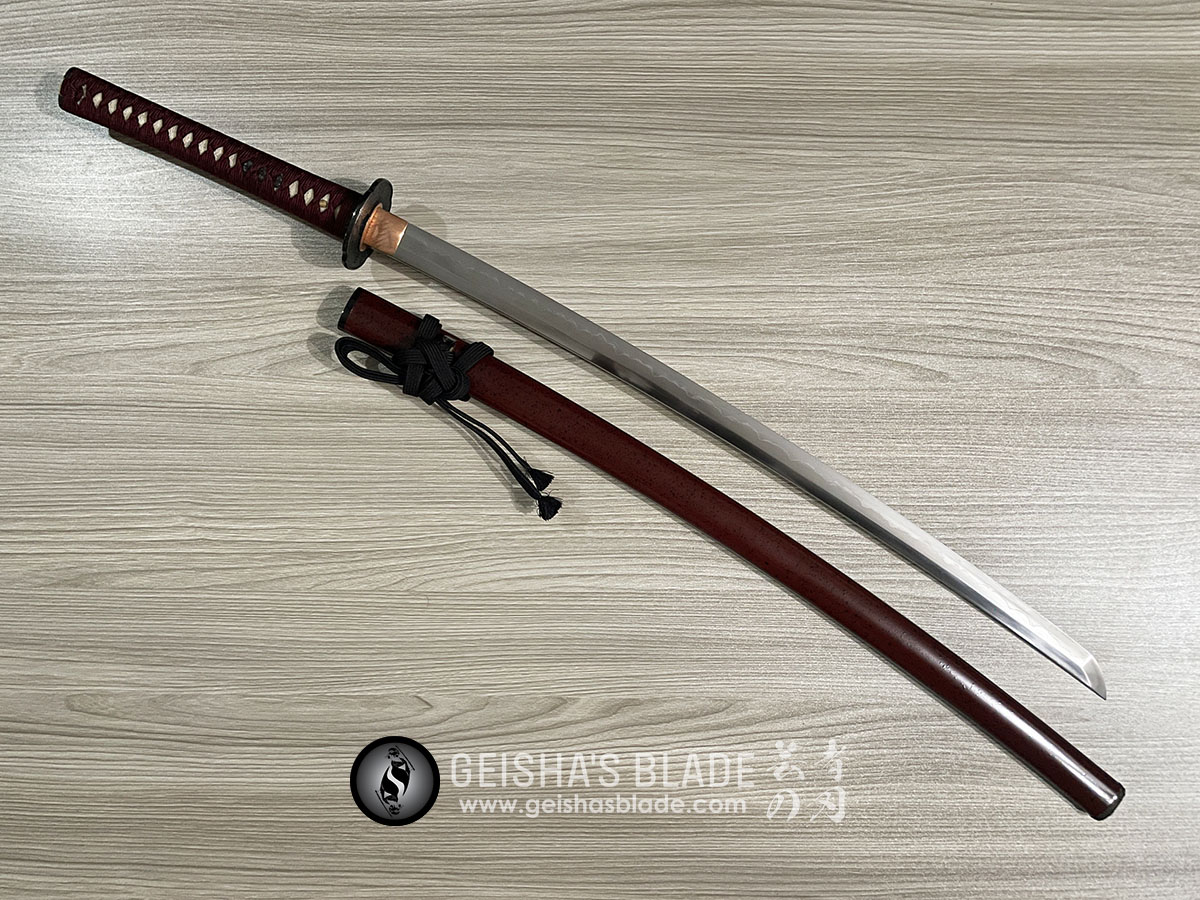

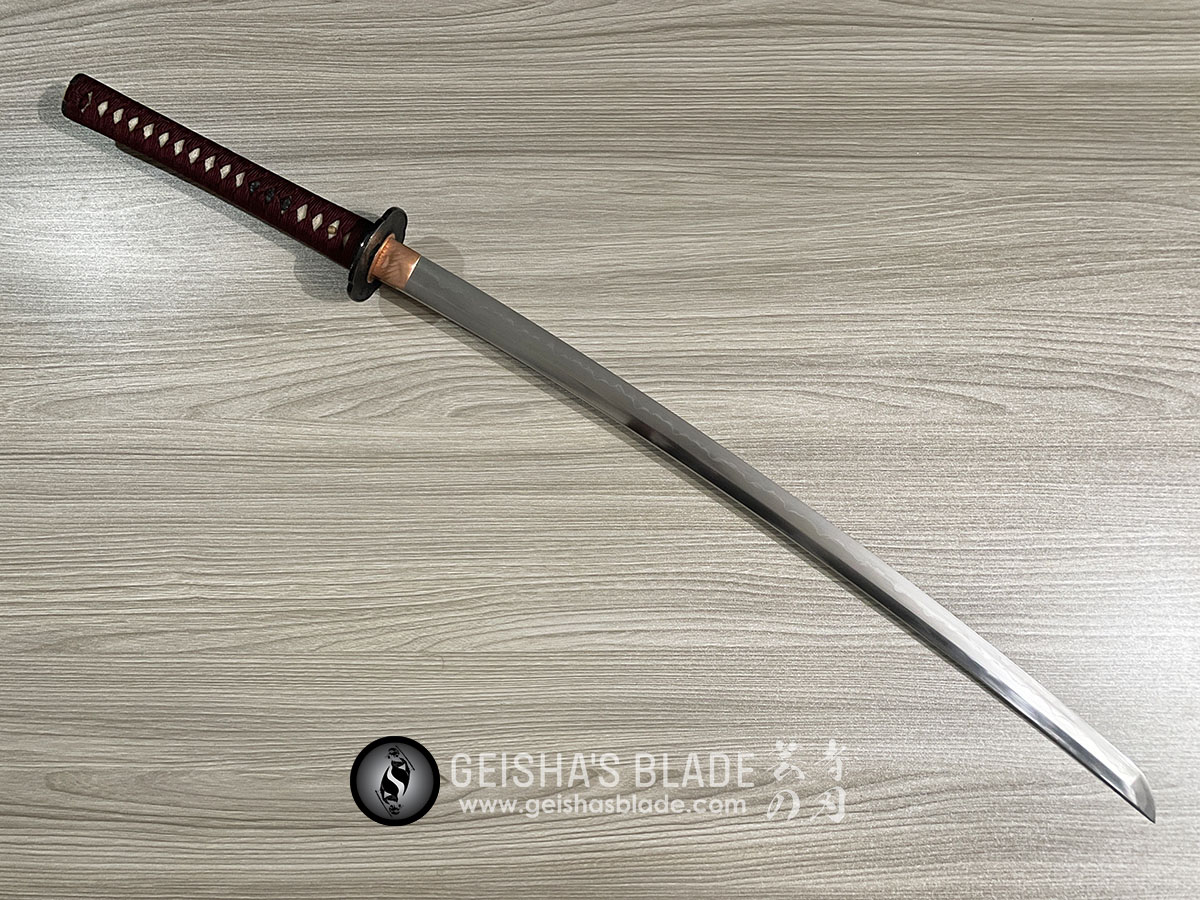






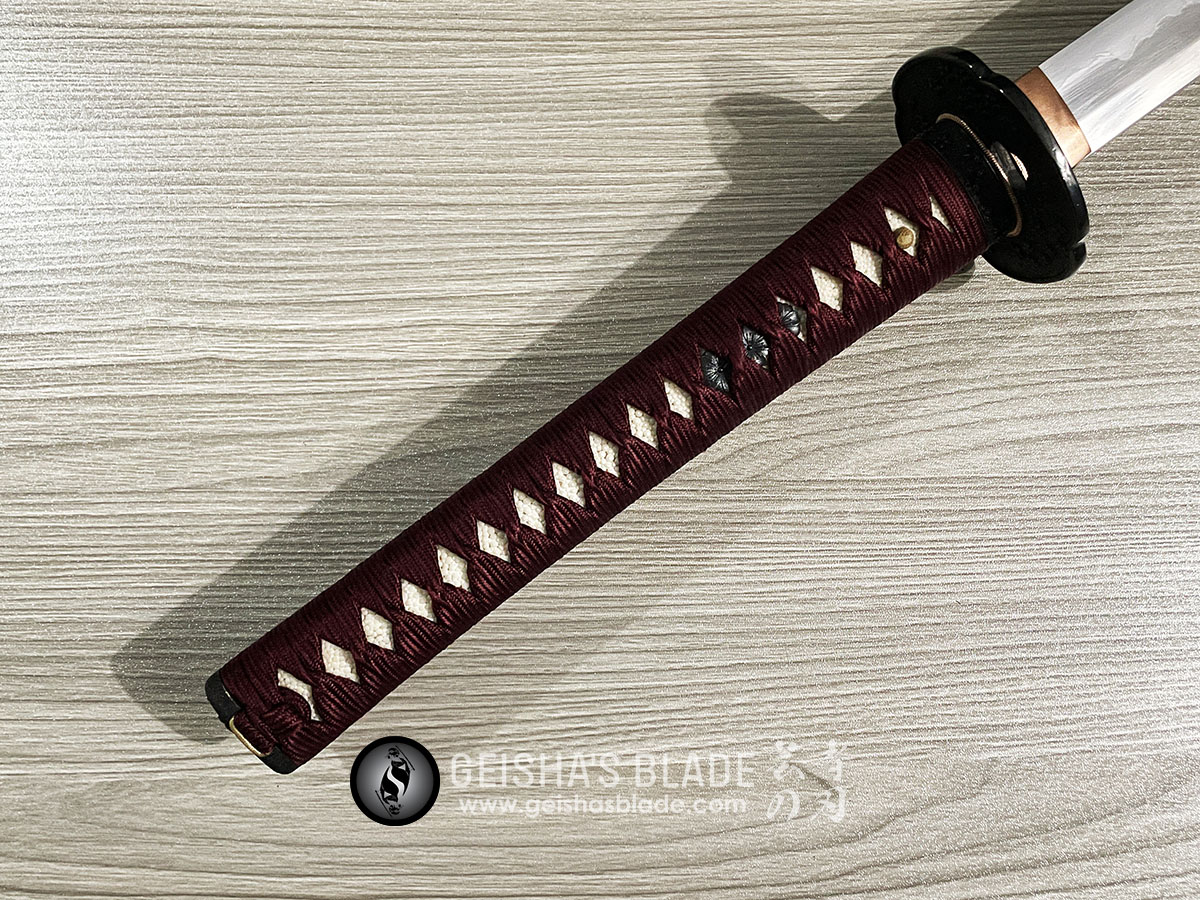






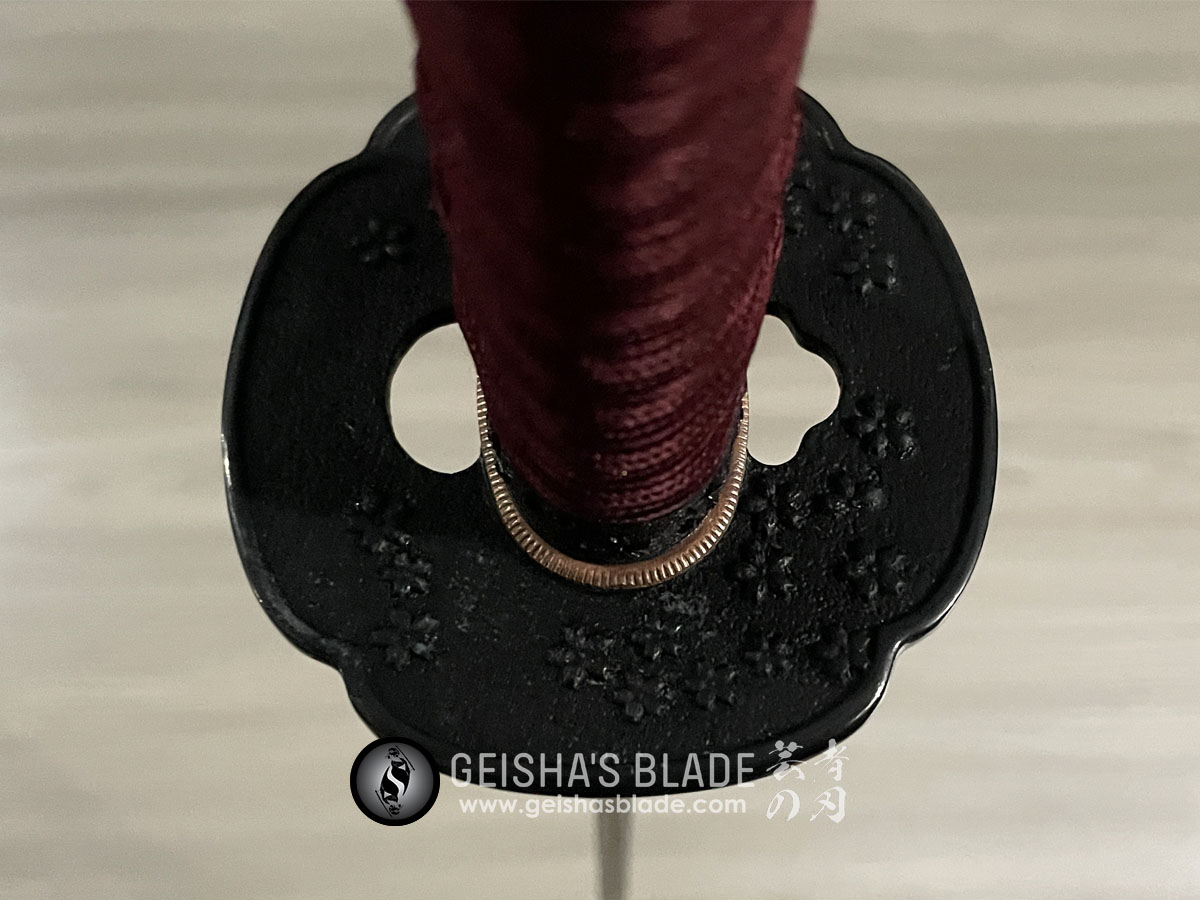
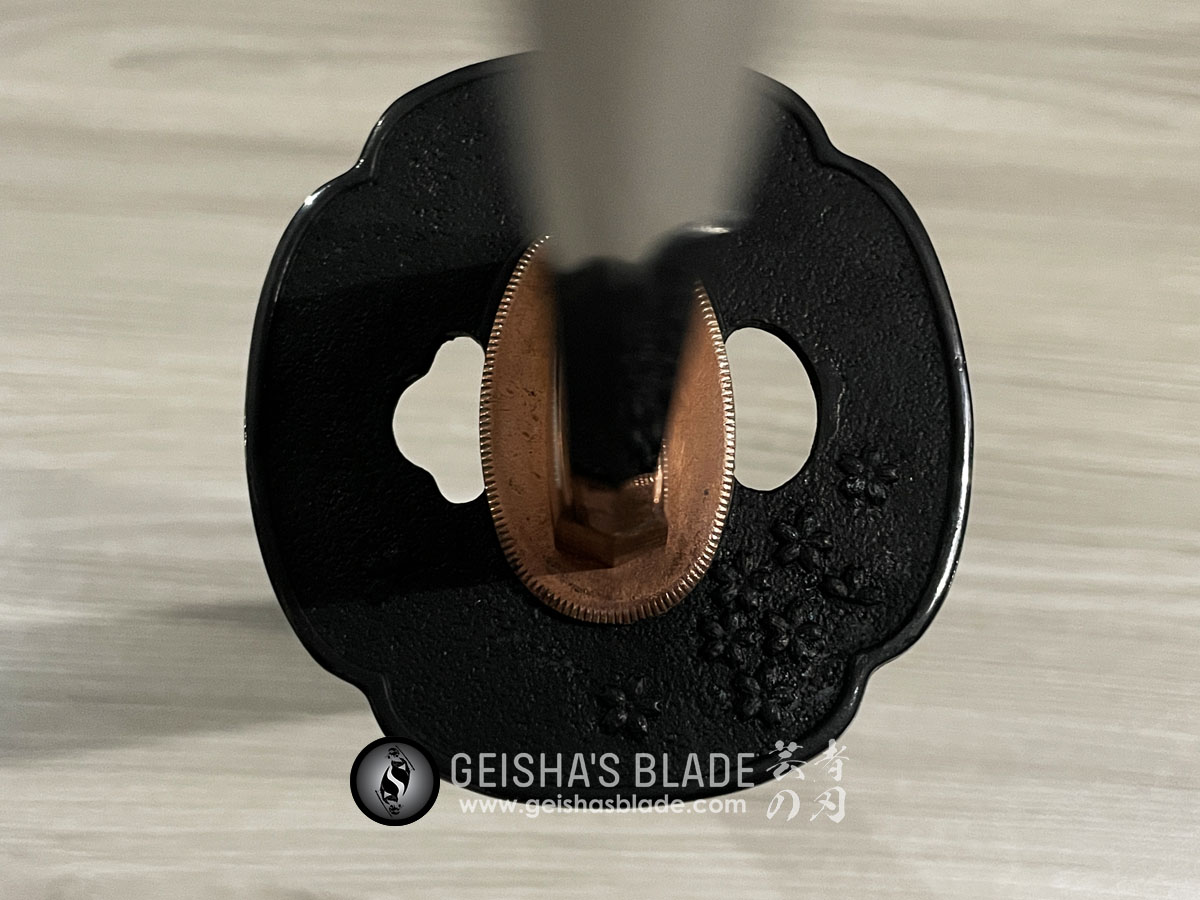





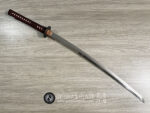







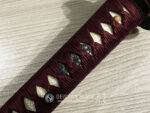

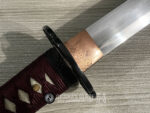


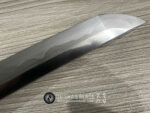






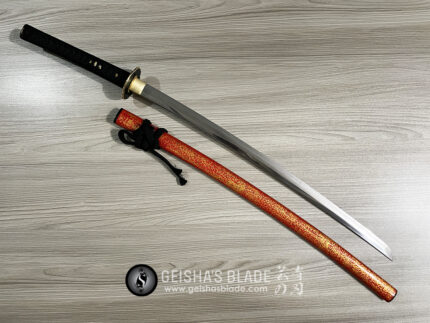







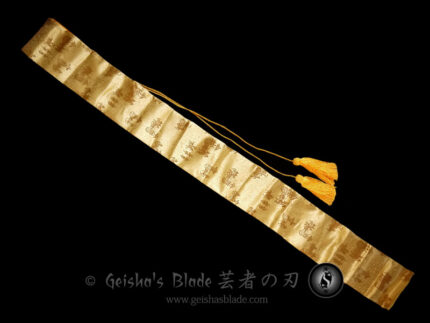








Reviews
There are no reviews yet.